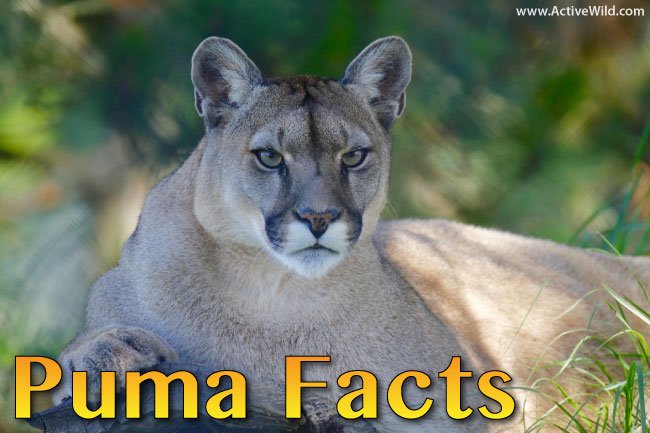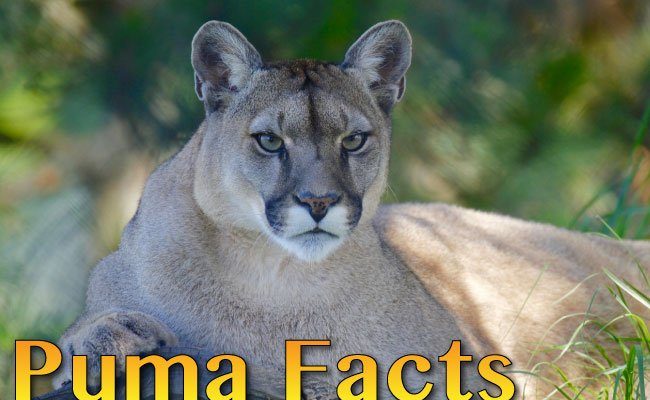
Pumas roam across a vast expanse of the Americas, proving their resilience and ability to thrive in diverse environments, from dense forests to rugged mountains. It’s almost like they wear different hats depending on where they are, making them one of the most intriguing creatures in nature. So, grab your favorite coffee, and let’s dive into some of the most captivating facts about the puma that might just surprise you!
1. They’re Found From Coast to Coast
Pumas are unique because they inhabit a variety of landscapes across the Americas. From the icy mountains of Canada to the dry deserts of Arizona and down to the lush rainforests of South America, they cover a vast territory. This wide range means they adapt well to different environments. You might picture them lounging on a rocky cliff, scanning the terrain for prey or sprinting through dense forests like a whisper in the wind.
It’s interesting to note that pumas can thrive in environments that many other large predators struggle in. They can be found in wetlands, chaparrals, grasslands, and even urban areas. This flexibility allows them to survive in areas where prey is abundant, showcasing their adaptability and resourcefulness.
2. Masters of Stealth
Pumas are built for stealth. With their sleek bodies, powerful limbs, and keen senses, they excel at hunting. Picture them as the ultimate ninjas of the animal kingdom. Their fur helps them blend seamlessly into their surroundings, allowing them to stalk prey without being easily detected. This natural camouflage is crucial for their hunting strategy.
Their hunting style is primarily ambush. They prefer to get as close as possible to their unsuspecting prey before making a sudden dash. This technique allows them to rely on strength and speed, often taking down animals much larger than themselves, like deer. It’s this skill that makes them not just survivors, but successful hunters in their habitat.
3. Stunning Color Range
While many of us associate pumas with a uniform tan or tawny color, they actually come in a variety of shades. Depending on the region they inhabit, their coat can range from a light, almost golden hue to a darker brown or gray. Some pumas even show a reddish tint, especially in the colder climates where fur texture thickens during winter.
Their coloration plays a critical role in their survival. In wooded or rocky areas, their fur blends seamlessly, helping them stay hidden from both predators and prey. So, when you see a picture of a puma, remember that color is not just about aesthetics—it’s a crucial part of their survival strategy.
4. Pumas Have the Largest Range of Any Wild Terrestrial Mammal
One of the most astonishing facts about pumas is their extensive range. They can travel over 1,000 square miles in search of food, mates, or new territory. This means they can cover a lot of ground, making them one of the most widely distributed wild terrestrial mammals in the Americas.
This expansive range is not just about searching for food; it also allows for genetic diversity. When pumas roam freely, they have the opportunity to meet others from different regions, which helps maintain a robust gene pool and overall healthy population. So, they’re not just wandering aimlessly; they’re playing a significant role in the ecosystem.
5. They’re Solitary Creatures
Unlike lions, which are known for their pride-based social structures, pumas are primarily solitary animals. Each puma establishes its territory, which it defends against intruders. Imagine a carefully choreographed dance, where every step is measured, and you’ll get a glimpse of how they navigate their space.
Males tend to have larger territories than females, often overlapping with several females’ territories. This setup allows them to find and mate with females without needing to stay close. While they may encounter others occasionally, they prefer their own company, making them the introverts of the wild.
6. They Can Jump Great Distances
One of the coolest physical traits of pumas is their incredible jumping ability. They can leap up to 40 feet in a single bound! That’s roughly the length of a school bus! This impressive skill helps them not only in hunting but also in navigating rocky terrains and dense forests.
Think about it: when a puma spots a deer from a distance, it doesn’t just sprint straight towards it. Instead, they’ll take advantage of their powerful leg muscles to spring from ledges or over obstacles, making them even more elusive. So, if you ever find yourself hiking in their territory, keep a lookout—not just for them but for their impressive jumps!
7. Their Vocalizations Are Unique
You might be surprised to learn that pumas have a variety of vocalizations that are quite distinct. They can hiss, growl, and even make a sound that resembles a person’s scream. This vocal repertoire helps them communicate with others, signaling territory, interest in mating, or even distress.
Imagine being in the woods, hearing a sound that sends a chill down your spine. That’s possibly a puma communicating! Their vocalizations are not just eerie; they play a critical role in their social interactions and survival strategies, especially during mating season when they need to attract partners.
8. Pumas Play a Key Role in Ecosystems
Pumas are more than just fascinating animals; they play essential roles in their ecosystems. As apex predators, they help control the population of herbivores like deer, ensuring that these populations don’t grow too large and damage their environment. Without pumas, we could see an overpopulation of certain animals, leading to significant ecological imbalance.
By keeping herbivore populations in check, pumas help promote a healthier habitat for many species. Their presence supports biodiversity and contributes to the overall health of the ecosystem. So, when you think of pumas, remember they’re not just majestic creatures—they’re vital players in the natural world.
9. Their Reproductive Habits Are Interesting
Puma reproduction is intriguing. After a gestation period of about 90 to 96 days, a female usually gives birth to 1 to 4 cubs. These cubs are born blind and helpless, relying entirely on their mother for survival during their early days. Picture a tiny furball, utterly dependent on its mom while it grows strong and learns the ways of the wild.
Cubs stay with their mother for about 1.5 to 2 years, during which time they learn essential hunting and survival skills. The mother teaches them how to stalk, pounce, and navigate their territory. After this period, they typically set off to establish their own territories, continuing the cycle of life.
10. Pumas Face Threats
Despite their adaptability and resilience, pumas face various threats today. Habitat loss due to urbanization and agriculture has reduced their territories. Additionally, they often come into conflict with humans, especially when livestock is involved. This can lead to negative perceptions and sometimes dangerous confrontations.
Conservation efforts are crucial to ensuring pumas continue to thrive. Protecting their habitats and educating communities about these animals can help mitigate conflicts. It’s vital for both pumas and humans to coexist, and awareness is the first step in achieving that balance.
In conclusion, the puma is a remarkable creature that embodies strength, adaptability, and crucial ecological importance. From their unique vocalizations to their vast territories, every fact about pumas adds to the mystery and admiration surrounding these big cats. By understanding and protecting them, we can ensure that future generations will have the chance to appreciate the beauty and power of the puma in the wild. So, the next time you hear about a puma, remember these fascinating facts—you’re now part of the club that knows just how incredible they truly are!

